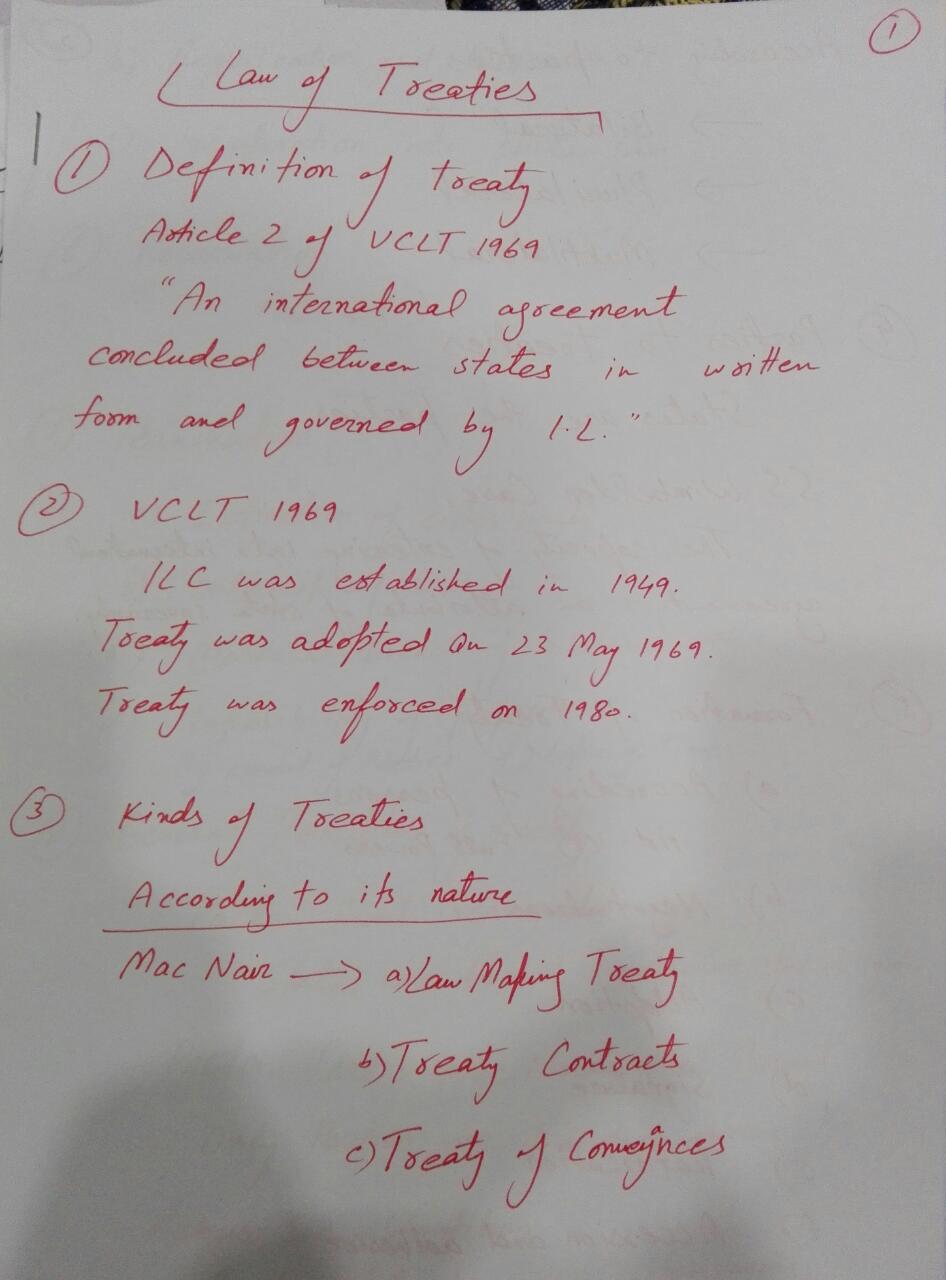
Week 1-2 Law of treaties
Treaties today are the most common source of international law norms. Certain areas of international law, such as international environmental law, are almost exclusively regulated by treaties. A brief definition of a treaty is contained in Art. 2(1)a VCLT 1969. However, this definition is only for the purpose of the Convention, although it is assumed to reflect a general definition (with certain exceptions – see below): ‘“Treaty” means an international agreement concluded between States in written form and governed by international law, whether embodied in a single instrument or two or more related instruments and whatever its particular designation.’ Treaties may have different names, such as: Convention Agreement Protocol Pact Charter. Treaties concluded between States may be: bilateral (i.e. concluded between two States) multilateral (i.e. concluded by more than two States) Law of treaties: Section A 12 or universal (i.e. if they bind almost all States (e.g. the 1945 UN Charter or the 1973 Convention on International Trade in Endangered Species of Fauna and Flora – CITES – which has almost 160 parties)). The content of treaties Regarding the content of treaties, the following distinction may be made: so-called ‘law-making treaties’ (traités lois) and ‘contractual treaties’ (traités-contrats). This division is based on the principle that the treaties of the first category establish general patterns of behaviour for the parties over a certain period of time in certain areas. The treaties belonging to the second category regulate some specific co-operation between States, such as a transboundary movement of specific hazardous waste. However, a strict and inflexible division is very difficult to uphold, as there is no clear-cut line between these two categories. Another category of treaties is the so-called ‘normative treaties’. These treaties correspond to an early concept of the abovementioned law-making treaties, as observed by the Special Rapporteur of the International Law Commission, Alain Pellet, in his 1998 report. They are not based on a contractual reciprocal basis. However, a treaty is rarely entirely normative or entirely reciprocal. In most cases, there is a mixture or variety of categories of norms.



